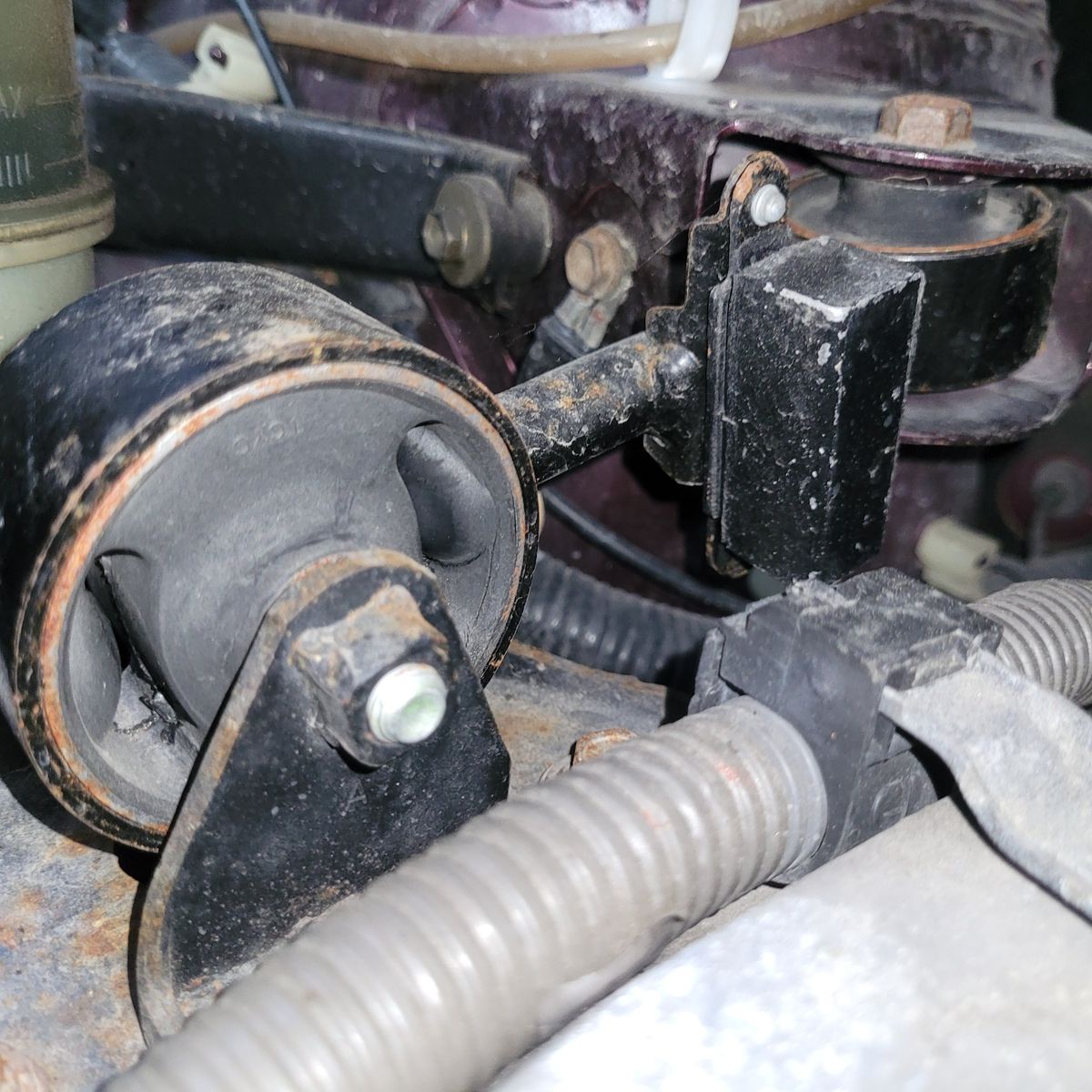What do engine mounts do?
Engines have many moving parts and can weigh hundreds of kilograms. The moving parts create a lot of vibrations. Engine mounts hold the engine in one place, preventing it from vibrating and moving while you are driving.
Engine mounts are made out of a rubber-like material. This helps reduce vibrations by limiting the amount of metal-to-metal contact that takes place under your bonnet. Some engine mounts are vacuum controlled, meaning that the level of vibration reduction can change according to the conditions. Other engine mounts are filled with liquid to further reduce shaking.
In most cases, a car’s engine and transmission are bolted together and held in place by up to four engine mounts. One side of each mount is bolted to the frame of your vehicle with the other side being bolted to the engine itself.
Causes of engine mount damage
In most cases, the engine mounts will be capable of lasting the life of a vehicle. However, the engine mounts are constantly under heating and cooling and torque stresses, which can cause them to crack or split over time. When an engine mount becomes damaged, it will not function as well and the driver will notice the effects. A damaged, split, cracked, leaking or collapsed engine mount can also fail a Warrant of Fitness (WoF).
Extending the lifespan of your engine mounts:
-
Avoid excessive acceleration and braking: Rapid acceleration and hard braking can put additional stress on the engine mounts, causing them to wear out more quickly. Try to accelerate and brake smoothly and gradually.
-
Drive carefully over rough roads: Rough roads and potholes can cause excessive stress on the engine mounts, leading to premature wear and tear. Try to avoid driving over rough roads and uneven surfaces as much as possible.
-
Keep the engine well maintained: Regular maintenance of the engine, such as oil changes and tune-ups, can help prevent excessive engine vibration and stress on the engine mounts.
-
Avoid overloading your vehicle: Overloading your vehicle can put additional stress on the engine mounts, causing them to wear out more quickly. Try to avoid carrying heavy loads in your vehicle, especially if you are towing a trailer.
Symptoms of damaged engine mounts
-
Increased engine vibration: If the engine mounts are damaged, they may not be able to absorb engine vibration as effectively, causing the vehicle to vibrate excessively while idling or accelerating.
-
Loud clunking or banging noises: Damaged engine mounts may cause the engine to move around excessively, leading to loud clunking or banging noises when accelerating or shifting gears.
-
Engine movement: If the engine mounts are severely damaged, the engine may move around in the engine bay, causing the belts and hoses to become misaligned or damaged.
-
Transmission problems: Damaged engine mounts can also affect the transmission, causing it to shift harshly or slip out of gear.
-
Poor handling: Damaged engine mounts can affect the alignment and balance of the vehicle, causing it to handle poorly and feel unstable on the road.
Visible signs of a damaged engine mount include:
-
Leaking fluid around the engine mount.
-
Cracks or tears in the engine mount rubber.
-
The engine on an unusual angle
Failed a WOF?
Damaged engine mounts can cause your vehicle to fail its Warrant of Fitness. If you have failed your WOF due to damaged engine mounts, you will need to have them replaced before your car can be driven legally.
Engine mount replacement & inspection in Hamilton
When replacing an engine mount, the engine will often need to be supported from underneath the vehicle. This can make things difficult. Fortunately, we can make the process easy for you!
At Grimmer Motors, our team of experienced, qualified and trusted mechanics can quickly determine whether the engine mounts are the source of your problem. We can then remove and replace the mounts using reliable parts you can count on.
For honest, reliable mechanics in Hamilton, contact Grimmer Motors today!

